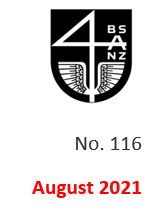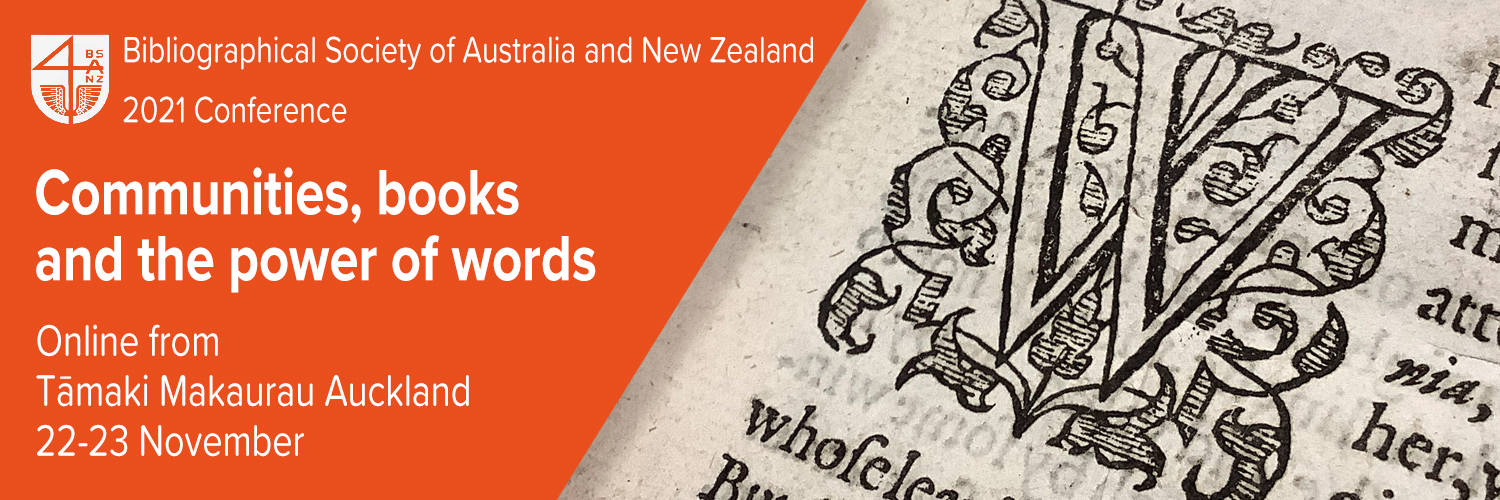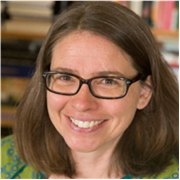Newsletter of the Bibliographical Society of Australia and New Zealand
BROADSIDE or BROADSHEET (1) Words applied to any piece of printed matter printed on one side only of a single sheet. Strictly, neither term should be applied to any but a whole, undivided sheet. Bibliographers abbreviate it to 1º. (2) The format of newspapers of similar size.
ABC for Book Collectors by John Carter and Nicholas Barker (2004)
2021 Conference
The BSANZ 2021 Conference promises to be a stimulating and thought-provoking two days, featuring two engaging and esteemed keynote speakers, a great line-up of papers, and more.
Format and programme
The keynotes and papers will be run as a series of Zoom webinars, enabling participants to engage in question and answer sessions. Also on offer is a curator talk by Nina Finigan on the Love and Loss exhibition at Tāmaki Paenga Hira Auckland War Memorial Museum and a rare book ‘bake off’. The BSANZ Annual General Meeting will round off the Conference.
The conference website is now live and registrations are open.
Keynote speakers
The keynote speakers, Dr Hirini Kaa and Dr Sarah Werner, bring a wealth of experience and knowledge from their respective fields.
Dr Hirini Kaa, of Ngāti Porou, Ngāti Kahungunu and Rongowhakaata, is an historian and Anglican minister. In `Ko Rawiri Te Tangata: Māori Anglicans and the power of The Word,’ Dr Kaa will consider how iwi engaged with Christian sacred texts through their own mātauranga, or worldview, and understood and used them through lenses such as whakapapa, whanaungatanga and tikanga. His talk will draw on his recently published book, Te Hāhi Mihinare | The Māori Anglican Church, which was a finalist in the Ockham New Zealand Book Awards 2021 and joint winner of the 2021 Ernest Scott Prize awarded by the University of Melbourne for the best history in Australia or New Zealand.
What’s the Power of Feminist Bibliography?
How can feminist theories and praxis help us understand bibliographic work and the power of bookish communities? In this talk, book historian and digital media scholar Dr Sarah Werner will consider what it means to be a feminist bibliographer, offering a sketch of both what feminist bibliography might be and why it matters.
Washington DC-based Dr Werner is the author of Studying Early Printed Books 1450-1800: A Practical Guide; her current work explores the possibilities for a feminist praxis of bibliography.
Forum for rare book and special collections librarians
An additional forum for rare book and special collections librarians will be held online on Wednesday 24 November. Please feel free to email Jo Birks with suggestions for discussion topics, workshop ideas, etc.
Local events
We encourage participants to consider holding their own local events, such as social gatherings, where possible. We’re also happy to hear that some centres are considering providing a venue for registered participants to watch and take part together.
Dr Nigel Bond and Jo Birks on behalf of the Organising Committee
Special Collections, Te Tumu Herenga Libraries and Learning Services, University of Auckland
e: nigel.bond@auckland.ac.nz | j.birks@auckland.ac.nz
USTC21: Gender & The Book Trades Conference
By Jodie Lea Martire
This year the theme of the USTC (Universal Short Title Catalogue) conference was “Gender and the Book Trades”, and with a hat tipped to Covid it was cost-free and held online between 16 and 19 June. Which was a great boon to this Australian attendee who could at least stay up to 11pm to catch the first few panels each night.
And these panels, I must say, offered enormous scope for thought and learning. Presentations considered a variety of genders and gendered experiences from contemporary South Africa to colonial Calcutta, from ephemera to library inheritances, and from queer bibliography to examinations of calligraphic manuscripts. The organisers, based at the University of St Andrews in Scotland, coordinated a very tight schedule through Microsoft Teams, providing access to all conference papers about a fortnight before the event (an excellent resource for Antipodeans who need sleep!).
Understandably, one area that was highlighted was the value of accessing high-quality, well-catalogued digitised materials, and thus the ability to share data, ideas and intellectual energy with colleagues around the world. Many scholars made important contributions by identifying and studying women involved as press owners, booksellers, collectors, distributors, typesetters, etc., in the trade. It seemed to me that they were collectively pushing the field beyond “discovering” women in book history to instead establish the principle that women have always been present and active throughout the industry – and thus train researchers’ gaze on the spaces where women’s participation should logically be expected.
BSANZ’s own Gemma Steele and Hayley Webster, both from Museums Victoria, presented on “Volumes in Vogue: Women, Readership and the Book”. Their research traced the lineage of the ever-present, gendered criticism around the “proper” uses of the book. As Steele and Webster showed, female booklovers have long been criticised for their bibliocentric choices in cases where male readers simply haven’t: whether it be for their reading, shelving or consuming of books, public vitriol seems to have been reserved for those of us of the fairer sex (ahem). The two drew on examples such as conduct books in Enlightenment France and nineteenth century artworks to demonstrate that the arguments that have recently been brandished to mock Gwyneth Paltrow (for hiring a book curator) or Bella and Gigi Hadid (for carrying books to fashion week) have historical precedents. Webster and Steele’s combination of a more classic book-historical analysis with a very contemporary social-media dissection was an elegant way of drawing out the inheritance of this particular form of misogyny and snobbery in relation to women and their books.
Overall, the conference was rich in ideas, materials and methodologies, and served as a fine snapshot of where contemporary bibliographical studies are pushing the boundaries in regard to genders and the book trades.
Industry Insight
Hayley Webster talks to Museums Victoria Librarian and BSANZ Twitter account manager Gemma Steele about using social media for professional purposes.
You have made quite an impression with your work on Twitter over several accounts, including @BibSocANZ, your professional Twitter profile @museumbooks and as an occasional contributor @museumsvictoria. Can you describe some of your favourite social media initiatives?
Social media can be such a great tool for learning from and networking with others in the field, as well as showing off your own work and achievements. I started thinking about social media in more strategic terms a few years ago and put quite a bit of thought into what I wanted to achieve through Twitter. I’ve made so many industry connections and it also serves as a great archive of images from the Museum’s collections that I can draw upon.
I think my favourite social media initiative that I drove was a takeover for the @MuseumsVictoria Twitter account for Library Shelfie Day in 2019 (https://bit.ly/3hyuVTe) where we asked members of the public to choose a shelf in our rare book room and we showed them what was on the shelf. It was a really fun day and we had lots of engagement with the public, as well as learning heaps about the collection. I still occasionally get public enquiries based on that thread more than two years on!
Do you have any tips for sustaining professional social media presence in the long term, and for keeping content fresh?
Be consistent, post as regularly as you can, and be sure and engage with others – it’s not an echo chamber. If you want your posts to stand out I would recommend drawing people in at the top of the post, trying to strike a balance between information and entertainment, and always attach either a picture, video or URL as it makes your post more prominent on the screen.
Are there any differences in how you approach managing a society or organisational account compared to how you manage your own feed?
Well, yes… on the BSANZ account I don’t swear like a sailor!
Seriously though, I’m very conscious that I’m representing a professional body, and beyond that a broad group of people with a broad range of opinions, so when I tweet on @BibSocANZ I try to remain as neutral as possible and if I have personal opinions on something I’ll air them using my personal account. I like to have fun with it and I try to inject some joy and a bit of personality otherwise it all runs the risk of being a bit of a dull chore.
BSANZ now has over 800 Twitter followers – you reported at the last AGM that the following grew over 50% in 2020. Do you have any plans for the account in future, such as attracting more followers?
I’m happy to say that the account also grew by over 50% in 2019. In the early days, growing the following was as easy as following other accounts that had an interest in bibliography, book history, rare books etc., and nine times out of ten they would follow us back. The success of that strategy is reaching its natural limit, so I am hoping by working with the newly-formed BSANZ engagement committee that we can begin to build on our following by offering more benefits, such as virtual events, and that we can attract people to engage with, or share, our content that way. I also think it’s great that we’ve started engaging more with the UK and US bibliographical societies as we can offer value for their base as well, and vice versa.
What do you think the value of social media is to societies such as BSANZ?
It’s kind of a no-brainer: it’s a quick, easy, low-cost tool that provides a wide reach. It’s been particularly great for promoting our events, such as the annual conference, and engaging with our members (and beyond). I’d love to see more BSANZ members engaging with us on Twitter and in kind I would love to promote any of your work related to bibliography or bookishness in our region; if you have anything you would like to promote send through a direct message.
Member Profile: Ngiare Elliot
I’m a paediatric speech pathologist in Tasmania, and I’m studying for my Master of Information Studies at Charles Sturt University. I suspect I’ve always wanted to be a librarian, but being a speechie has been very stimulating and endlessly entertaining. I graduated in 1998 and then completed my Masters in Communication Disorders in 2012, with a few stops along the way for a Teaching English to Speakers of Other Languages certificate and first year German, which I’m hoping to continue next year. I also enjoy trying to write fiction when I have a moment or two spare. I would love to work with rare books and archives one day, so am hoping to do my university placement in that area (will cross my fingers.) I only have a very tiny collection of rare books, but my most precious are the ones owned once by my great grandfather (I suspect they’re old, rather than rare), which he’s signed. They’re more valuable than diamonds to me, simply because I can run my finger over his signature and pretend he’s there with me. I’m becoming really interested in the provenance of old books, particularly the handwritten notes in margins. I’m going to take every opportunity I can to study as much as possible in this area. I’m also a huge Alan Garner fan, particularly of his novel The Owl Service, and would love to visit the Bodleian one day to look at his collection. I’ve even managed to acquire a piece of the dinner service that the book was based on – very exciting!
Call for Content
Do you have a book-themed online exhibition that you’d like to share with BSANZ members? The BSANZ Engagement Committee is seeking your input to highlight existing virtual content from Australian and New Zealand libraries and cultural institutions. We’d be interested to host a short talk with a curator, librarian, bibliographer or academic on the exhibition on the BSANZ YouTube channel. A link to the exhibition and YouTube talk will be featured in Broadsheet and shared across BSANZ social media channels. Please get in touch with Hayley Webster at hwebster@museum.vic.gov.au to participate.
News
BSANZ hosted a virtual visit from the UK’s Bibliographical Society in July. The visit encompassed three major rare book collections in Melbourne, including the State Library of Victoria, the University of Melbourne and Monash University. The collection visits were hosted by Anna Welch, Susan Millard and Anne Holloway, and offered the UK members a great introduction to some of the fantastic collections held in Australia and New Zealand. BSANZ has arranged to share future issues of Broadsheet with the Bibliographical Society, which we hope will foster mutual awareness and present further opportunities for collaboration.
There has been some movement afoot among BSANZ members and in the world of rare books & special collections in Australia and New Zealand. Nicholas Sparks has stepped down from the role of NSW representative for BSANZ as he takes up the position of Special Collections Manager at the University of Adelaide. In this new role he will be in charge of managing, developing and enhancing access to rare books, manuscripts, archives, as well as art and heritage objects. Maggie Patton has taken up the position of NSW representative, while Helen Bones has taken over as BSANZ Facebook manager. Daniel Wee has been appointed to the role of Librarian (Collection Curation & Engagement) at State Library of Victoria. In adjacent news, ALIA Rare welcomed Paige Wright (Special Collections Project Officer at University of Newcastle Library) to the committee.
BSANZ member Dr Louise Ann Box, was recently awarded a 2021 Chancellor’s Prize for her PhD Thesis “The print collection of Elizabeth Seymour Percy, 1st Duchess of Northumberland (1716 – 1776)”. Paul Eggert reports that the paperback of his book The Work and the Reader in Literary Studies: Scholarly Editing and Book History (2019) has just been released. The book contains various chapters or chapter-sections on Australian literary subjects: Mary Gilmore, Rolf Boldrewood, Charles Harpur, the Ned Kelly story as adaptation, and the Canberra International Music Festival.
ALIA Rare is now hosting monthly online catch ups to discuss professional issues in rare books & special collections. The June meeting focused on digitisation, including: funding models; the challenge of finding an ILMS that supports access and preservation equally; 3D scanning and digital viewing platforms; and recent developments in Handwritten Text Recognition (HTR). In July conversation revolved around questions and topics submitted by the attendees, including ‘what makes a book rare?’, issues around deaccessioning, models for service provision during the pandemic, digital repositories and handling etiquette in reading rooms. Participants have included people from a variety of institutional settings, including state libraries, university libraries and special libraries, and range from beginners to experienced practitioners. ALIA Rare will share details for forthcoming emails via their Twitter account @ALIARareSpecial and elist (subscribe here.)
Some Australian and New Zealand libraries participated in June’s International Kelmscott Press Day celebrations to celebrate the 130th anniversary of the foundation of the press and to highlight local holdings. Contributions included a physical and virtual exhibition William Morris and the Kelmscott Press in Adelaide from University of Adelaide Library. The university holds a small but significant body of Kelmscott printed heritage, including the Kelmscott Beowulf and the Sire Degrauvant in historic fine bindings, two deluxe facsimiles of The Works of Geoffrey Chaucer, plus other rare, original Kelmscotts of notable provenance. Sarah Morley of the State Library of New South Wales shared a blog post highlighting their copy of the Kelmscott Chaucer, which is encased in a binding made from kangaroo hide. The Fryer Library shared their holdings via Twitter and Facebook, including The Golden Legend (1892) which uses the Roman type Golden, and The history of Godefrey of Boloyne and of the conquest of Iherusalem (1893) with original vellum binding, reprinted from Caxton’s edition of 1481 and a handwritten letter by Morris. Check out the worldwide activities on social media at the hashtag #kelmscottpressday or catch up recordings and online exhibits via the William Morris Society (US) website.
The UK has placed an export ban on a unique collection of material relating to John Gould, including original drawings by two of his principal artists, Elizabeth Gould and Henry Constantine Richter. Listen to the Australian Museum’s Archivist Vanessa Finney on ABC radio discussing Gould’s Australian legacy. On a related note, SLV hosted a panel for Science Week (featuring yours truly), Nature Illustrated, that explored the legacy of Elizabeth Gould among other topics. The Exeter Book, one of the oldest books of poetry in English, has been digitised at a high resolution to facilitate close analysis of its construction.
In 1854 Australia purchased one third of British book exports.
The Golden Age by Geoffrey Serle (1963)
Spend a cosy mid-winter’s afternoon catching up on the latest from SHARP in the SHARP News June issue. Check out the first issue of The Rare Commons, which takes a fresh and accessible approach to covering topics in rare and special collections, starting with a rather gruesome elaboration on parchment. Biblio 360 is free to download and includes a list of relevant clubs, fairs, exhibits, private libraries, classes, and seminars for the savvy collector. On that note, ANZAAB have released their third joint catalogue of highlights.
Stuart Kells launched his free eBook Australian pulps 1939-1959: You go high we go lo with an engaging presentation that described the Australian pulp genre in relation to its American and British counterparts. He suggested that Australian pulp offered a uniquely “Australian voice” that derived from 19th-century Australian literary roots, wrapped in an appealing 20th-century material form. Kells touched on a range of topics relating to pulp, including the belated nature of collecting this self-consciously disposable material in libraries, and the ways in which such an ephemeral form nevertheless managed to comment on important social issues such as race, gender and sexuality. I was surprised by his description of pulp as “mildly and safely transgressive content” as I have mainly encountered pulp through an ongoing interest in 1950s and 1960s American lesbian pulp fiction, which was often consumed by queer women in secrecy, and at the risk of serious social and economic consequences if a reader’s sexuality were exposed.
The Bibliographical Society (London) shared a presentation on their new resource Book Owners Online, rather sweetly abbreviated to BOO. The freely accessible database currently provides access to entries for 1950 British owners of the 17th and 18th centuries, and the intention is to expand the temporal and geographic range. The database was established with funding from the Bibliographical Society, however further funding opportunities are being scoped and crowd sourcing data is also of interest to the project. I expect BOO would be useful to Australian and New Zealand libraries, especially those libraries that were established in the 19th century when books were commonly imported from Britain.
Harry Ransom Centre’s Renaissance Humanism Between Islamic Covers is a fascinating examination of an Aldine text in a binding that appears to have come from the Islamic world. I really enjoyed the insights shared by presenters Aaron Pratt and Andrea Knowlton, who both eloquently conveyed the excitement of working to uncover the history of texts.
I caught up on Rare Book School’s The Scientific Woodblock to 1800 with Roger Gaskell and Caroline Duroselle-Melish. This was a fantastic visual presentation for understanding this printing technique, with photographs of beautiful woodblocks from various angles providing useful insights. While scientific books were often printed in editions of 600 or 1200, woodblocks were printed as single sheets when needed. Woodblocks, which were a significant investment and a durable medium, were sometimes rented out and reused in contexts quite different from their original intention.
Do you have news for Broadsheet? Seeking:
-
Conference wrap ups
-
News from ANZ libraries
-
Professional updates
-
Interviews for ‘Industry Insight’
-
Project Updates
-
Member Profiles
-
Upcoming events
-
Online links
-
Social Media Campaigns
And more! Items should be relevant to BSANZ (e.g., bibliography, book history or rare books related) and will be included at the discretion of the editor.
Contact Hayley Webster at hwebster@museum.vic.gov.au with submissions.
On a similar note, European Blockbooks: Print-on-Demand in the 15th Century looks at blockbooks in the collection of the Morgan Library & Museum. Curator John McQuillen describes how blockbooks emerged from the manuscript tradition and sometimes made the transition into the era of moveable type. They were produced by rubbing an inked woodblock rather than in a press, and used a distinctive brown-black water-based ink, different to the ink used in manuscript or print. Printed in small quantities on request over a period of many years, these books lead McQuillen to draw a parallel between blockbooks and contemporary print on demand.
The Pforzheimer Lecture by Sarah Neville takes a fascinating look at 16th-century herbals. Her scholarship sits at the intersection of the history of the book and the history of science, and seeks to realign the study of early herbals by applying a material lens to reveal the multiple agents involved in creating a work. Neville investigates small format, anonymously authored herbals, contending that while they constituted a significant commercial success in their period, they have been overlooked by scholars due to a perceived lack of originality. According to Neville, such herbals were created with great attention to their use; they were constructed as material objects with real world application. She suggests that this attention to use could drive innovation, for instance, illustrations became increasingly realistic during the 16th century in line with reader’s demands. Neville suggests that too heavy a focus on authorship within the history of the book may overlook what everyday, practical material can reveal.
‘Use’, ‘used’ and ‘useful’ are all words that pique my attention within the history of the book, the history of science and librarianship. Swathes of 19th-century books have ‘useful’ in their title, including many natural history books such as we hold in the Museums Victoria Library. In the context of 19th-century Australian natural history, this can be partly explained by a utilitarian approach to colonial science which sought to exploit natural resources for imperial wealth. Within book history ‘used’ evokes past readers and owners within the fields of provenance research, marginalia and library history. To my mind, the term also alludes to the difference between a ‘working library’ in which books are tools, and the library of a collector, in which books are acquired as objects in their own right. Interestingly, authors in critical librarianship have aligned the mobilisation of ideas such as practicality and usefulness in libraries with the emergence of corporate capitalism and its effect on contemporary library practices. It’s an intriguing area of convergence, and one I hope Sara Ahmed’s What’s the Use? might shed some light on.
There’s no shortage of bookish events and outputs on the horizon. Simon Farley has reported that the forthcoming issue of Fryer Folios is being prepared for publication, SLV’s Foxcroft Lecture The tree house in Portugal, a book history is coming up, Words in Winter has been postponed until September and the Melbourne Writers Festival has shifted online. Love your Bookshop Day falls on 9 October, which also happens to be this literary Libran librarian’s birthday!
Bye for now, bibliophiles.
- Hayley Webster








